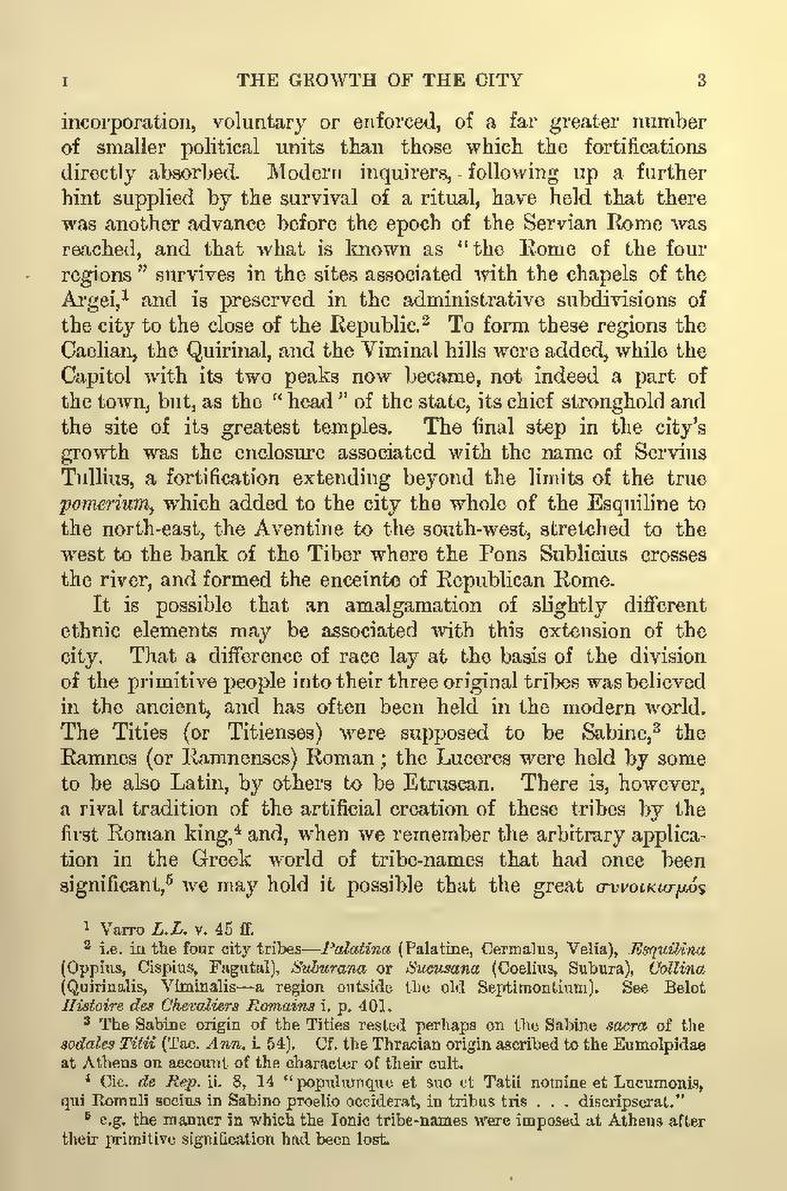incorporation, voluntary or enforced, of a far greater number of smaller political units than those which the fortifications directly absorbed. Modern inquirers, following up a further hint supplied by the survival of a ritual, have held that there was another advance before the epoch of the Servian Rome was reached, and that what is known as "the Rome of the four regions" survives in the sites associated with the chapels of the Argei,[1] and is preserved in the administrative subdivisions of the city to the close of the Republic.[2] To form these regions the Caelian, the Quirinal, and the Viminal hills were added, while the Capitol with its two peaks now became, not indeed a part of the town, but, as the "head" of the state, its chief stronghold and the site of its greatest temples. The final step in the city's growth was the enclosure associated with the name of Servius Tullius, a fortification extending beyond the limits of the true pomerium, which added to the city the whole of the Esquiline to the north-east, the Aventine to the south-west, stretched to the west to the bank of the Tiber where the Pons Sublicius crosses the river, and formed the enceinte of Republican Rome.
It is possible that an amalgamation of slightly different ethnic elements may be associated with this extension of the city. That a difference of race lay at the basis of the division of the primitive people into their three original tribes was believed in the ancient, and has often been held in the modern world. The Tities (or Titienses) were supposed to be Sabine,[3] the Ramnes (or Ramnenses) Roman; the Luceres were held by some to be also Latin, by others to be Etruscan. There is, however, a rival tradition of the artificial creation of these tribes by the first Roman king,[4] and, when we remember the arbitrary application in the Greek world of tribe-names that had once been significant,[5] we may hold it possible that the great [Greek: synoikismos]
- ↑ Varro L.L. v. 45 ff.
- ↑ i.e. in the four city tribes—Palatina (Palatine, Cermalus, Velia), Esquilina (Oppius, Cispius, Fagutal), Suburana or Sucusana (Coelius, Subura), Collina (Quirinalis, Viminalis—a region outside the old Septimontium). See Belot Histoire des Chevaliers Romains i. p. 401.
- ↑ The Sabine origin of the Tities rested perhaps on the Sabine sacra of the sodales Titii (Tac. Ann. i. 54). Cf. the Thracian origin ascribed to the Eumolpidae at Athens on account of the character of their cult.
- ↑ Cic. de Rep. ii. 8, 14 "populumque et suo et Tatii nomine et Lucumonis, qui Romuli socius in Sabino proelio occiderat, in tribus tris . . . discripserat."
- ↑ e.g. the manner in which the Ionic tribe-names were imposed at Athens after their primitive signification had been lost.
